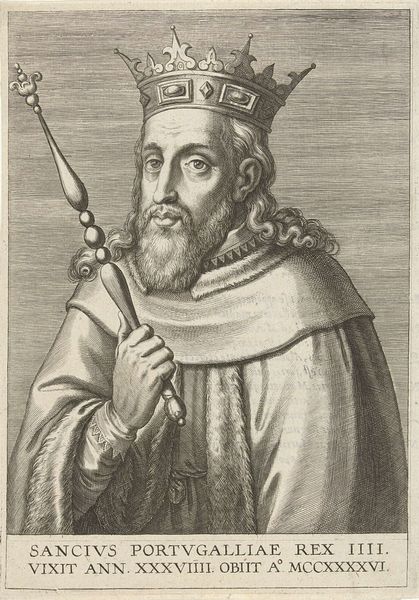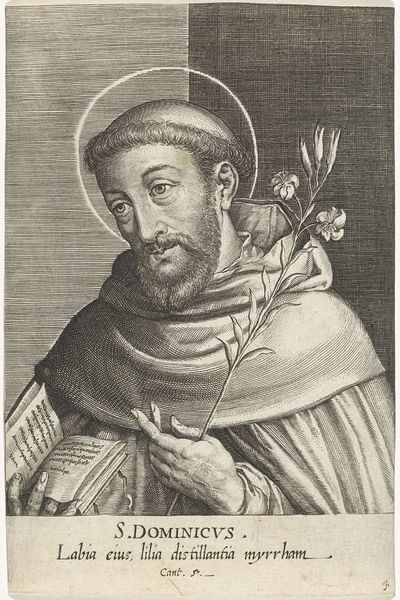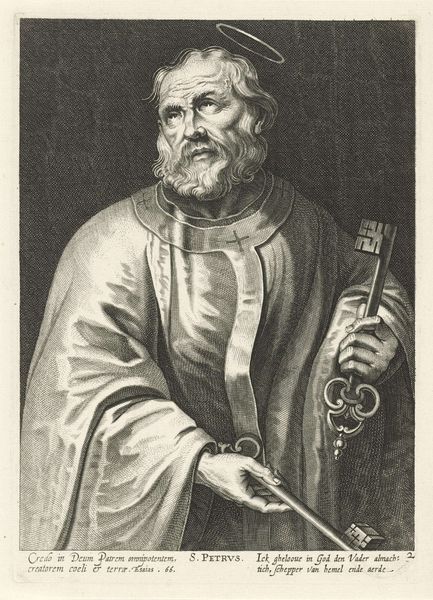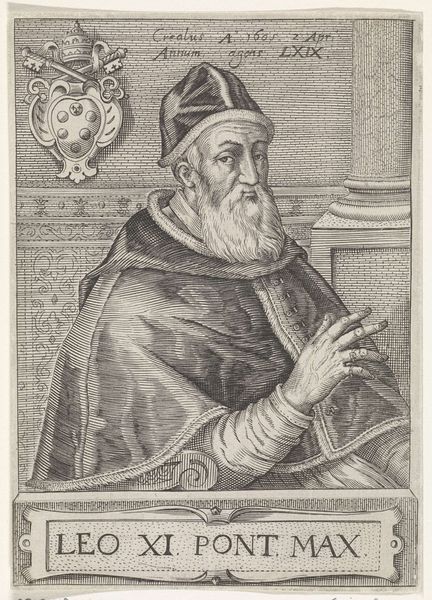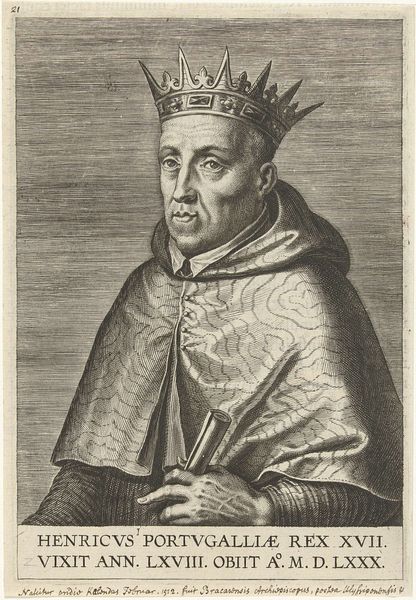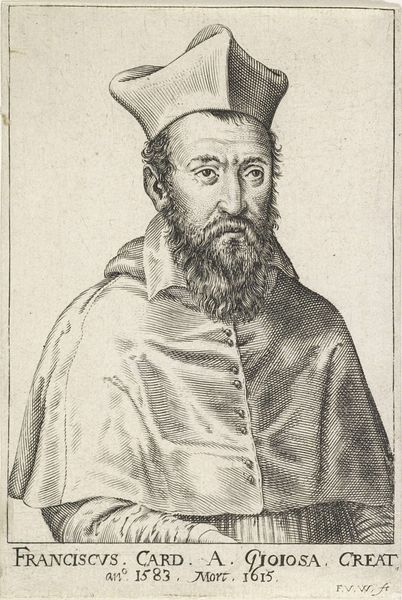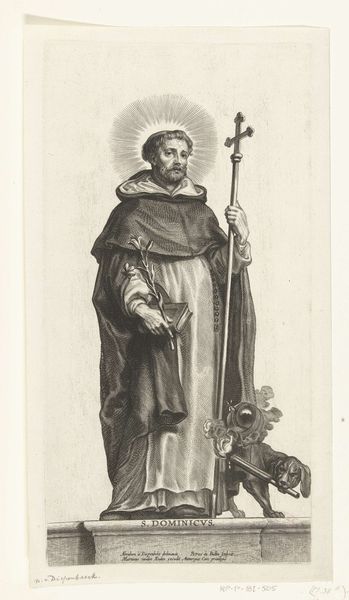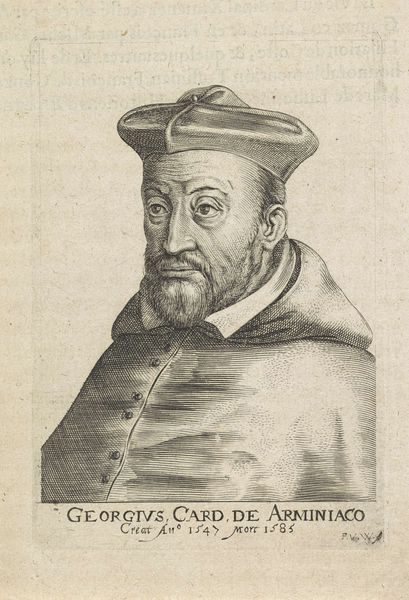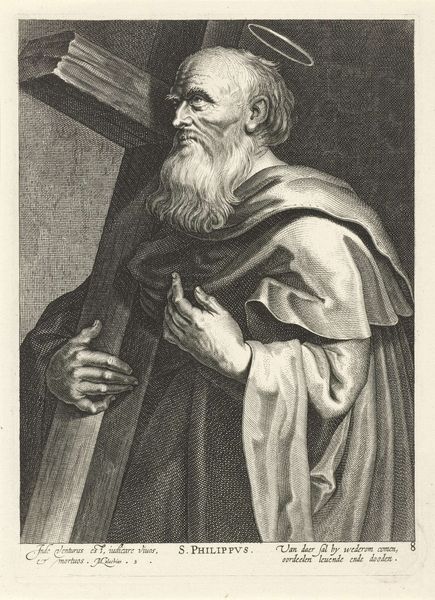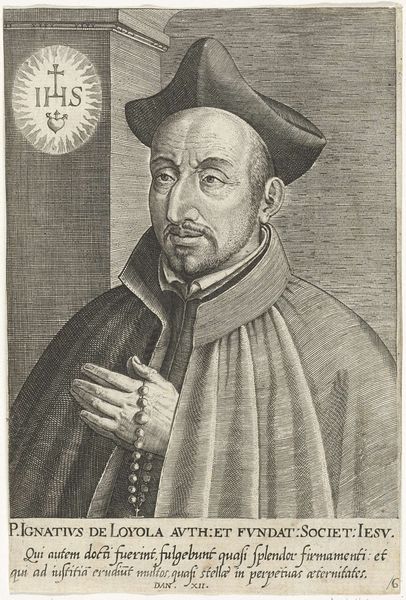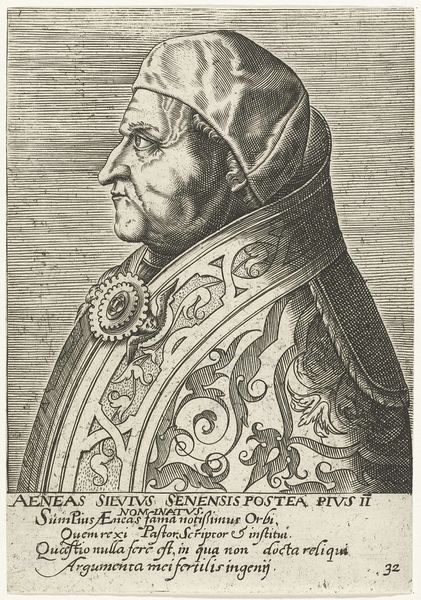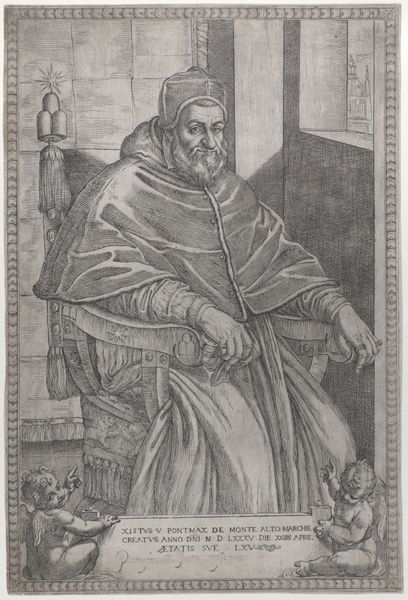
pen
#
pencil drawn
#
book
#
pencil sketch
#
old engraving style
#
personal sketchbook
#
portrait reference
#
pencil drawing
#
pen-ink sketch
#
sketchbook drawing
#
pen
#
portrait drawing
#
pencil work
Dimensions: height 150 mm, width 100 mm
Copyright: Rijks Museum: Open Domain
Curator: Dominicus Custos, the artist, probably produced this pen artwork depicting H. Augustinus, sometime between 1579 and 1615. It’s currently held at the Rijksmuseum. Editor: He looks contemplative, burdened almost. The tight lines create a strong contrast that gives the figure weight, but there is also delicacy in the rendering of his face and the intricate details of the mitre and staff. Curator: Yes, the artist's masterful use of hatching and cross-hatching definitely sculpts the form, emphasizing the play of light and shadow. It lends the piece a striking sense of depth despite being created simply with pen. I wonder what Augustine's thoughts might have been at that particular moment. Editor: Knowing that portraits like this circulated widely as devotional images offers a critical clue. Consider Augustine's theological impact. It shifts the way we understand this work—it becomes a touchstone, almost mass-produced for spiritual contemplation. The artist seeks not just to capture likeness, but authority. Curator: Interesting observation! See, I was first struck by the almost tactile quality of the beard—how those repeated strokes manage to suggest softness but the hands holding the crozier show a delicate gesture, drawing attention back to his intellectual persona rather than simple piety. Editor: And let’s not forget how images such as these functioned in relation to religious power structures. Was Custos explicitly commissioned, or were they created to cater to the wider popular devotion to Augustine? This gets me wondering what theological discourses of the time are subtly endorsed or even questioned by choices within the piece itself? Curator: Right! If we consider Augustine’s own writings on memory, this artwork almost serves as a memento mori. But still, if one brackets such references, that meticulous detail can itself become meditative… the more one dwells, the more one perceives. Editor: Absolutely. Bringing attention to the circumstances surrounding artistic choices broadens the canvas when we examine pieces from this era. It reminds us to view works as more than art, and instead cultural documents.
Comments
No comments
Be the first to comment and join the conversation on the ultimate creative platform.
